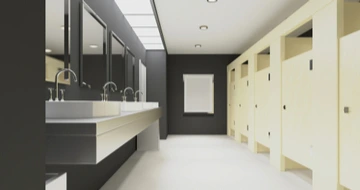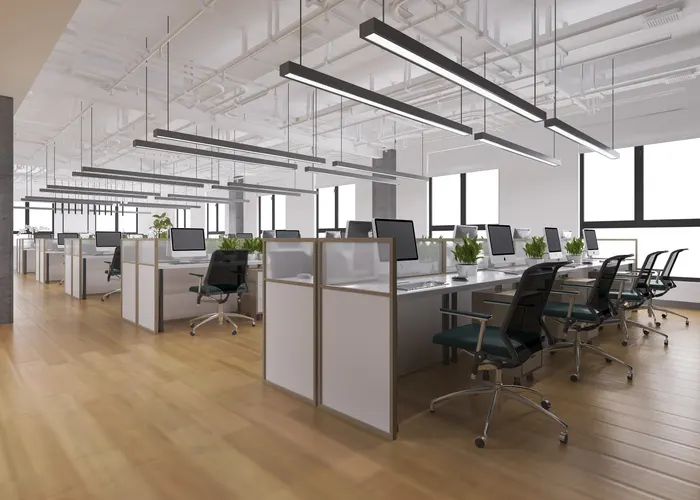Why is Space Management Important for an Office?
Workplaces are changing to become more accommodating towards employees and their needs. While office space management isn't a new concept, it's certainly becoming more focused on user experience as access to accurate data allows for the integration of helpful tools such as workplace management software.
What is space management?
Space management is the process of controlling, managing, and supervising the different physical workspaces a business occupies. The process involves data collection, analysis, forecasting, and strategizing. Generally, it is about developing the system to track floor plans and occupancy levels within an organization.
Space management software helps simplify the procedure, enabling scalable and strategic optimization plans to solve particular challenges around utilization and functionality, giving employees a better workplace experience.
To deliver value, space management strategies require accurate and reliable data on a building's utilization. This is typically collected with technology such as occupancy sensors, which can monitor and track occupancy levels in real-time. Such data can be integrated into building management systems or fed to space management software to help generate usage reports for analysis.
A clear understanding of how your key facilities are utilized forms the basis for many other operations, including property management and occupancy management.
The principle of space management planning includes these four components:
- insight data
- real-time records
- space utilization and optimization
- costs reduction
Insight data is about the application of historic data to identify trends. You can gain an understanding of how your organization is utilizing its physical space over a period of time and the associated costs by analyzing reports from an integrated workplace management system that compiles accurate space usage data.
Real-time records are how your company is utilizing its office space right now.
Space utilization and optimization is the third step, where you analyze the insight and real-time data and plan how to use it to make improvements to your space.
Cost reduction in real estate management is about ensuring your plan is focused on where you can reduce space and optimize your current space inventory to improve return on investment.
Why should your business prioritize space optimization?
Cost management
Most companies and big organizations require a large estate of office space to locate their administration, research, customer services, and other essential business functions. If your real estate portfolio comprises multiple buildings with offices spread across multiple floors, it's even more important to ensure efficient space use to reduce or prevent significant operational costs.
Waste reduction
As the world becomes increasingly invested in environmental and CO2-reducing initiatives, proactive space management in the workplace will also help to cut down on the consumption of valuable resources and help position your facility for the future.
Employee engagement
Making an improvement in your workplace facilities isn't simply cost-effective asset management; it can also have a significant impact on how employees feel and perform at work. Strategic space management will help to create a more pleasant and productive environment that helps to stimulate existing employees and attract future talent.
Effective space management doesn't have to be hard. You simply need the right tools to ensure your real estate can serve the needs of employees while helping facility managers better understand utilization.
The role of space management software in your optimization strategy
Leveraging space management solutions effectively can help organizations take an evidence-based approach around decisions on how to implement the following:
Reduce real estate costs
It might seem as simple as looking at the general opening hours of the office to find out when the space is being used, but this simplistic approach doesn't account for many aspects of the modern working environment.
For example, with flexible and hybrid working hours now more popular than ever, can you actually say for sure when most of your office users come and go? What about teams that spend a significant amount of time on the road, going to visit customers or suppliers?
A space management system can give you an accurate picture of how many people you need to have space for on an average day and show you the trends of demand for this space across weeks and months.
Management of space by both physical dimension and actual employee utilization could highlight areas for consolidation - enabling savings on utility bills by requiring less heating, cooling, and lighting; whilst also providing options for big cost savings by downsizing your overall space or subletting for an additional income. Perhaps that bigger building you were thinking of moving to might not be needed after all.
Meeting and conference room management
Meeting and conference rooms are premium office facilities – but are they being used intelligently and in ways that justify the cost? Are rooms truly being used at capacity, and are bookings being kept?
By monitoring actual meeting room usage, you can identify problems of under-utilization and initiate an effective booking system for the capturing of actionable data regarding missed bookings and both idle and inappropriately sized rooms, in order to create and implement policies for the optimization of your workspace according to your real needs.
Reduce energy consumption
Knowing when the building is used also gives you a chance to better plan and operate lighting and HVAC systems to coincide with actual demand and not just when you assume the most people will need it.
Desk space management
Hybrid working may render your old seating arrangements obsolete. Knowing to what capacity your employees are using their desks may help you determine how many permanent desks could be converted to 'hot desks,' saving space.
Not only this, but integrating your real-time space utilization data into your desk booking systems will enable you to efficiently roll out hoteling by making sure that any desk that is not utilized in the booked time frame can be dynamically released for use.
Effective space management
Through improving the management of your organization's available space in the above areas, you can increase the productivity of your staff, who will find the booking of meeting rooms and desks easier and far more efficient in a smart office tailored specifically to their working needs.
What does the office space management process look like?
Now that you've got some insight into what space management is and how accurate space data and space management software can do to support you in your optimization plan, let's take a look at what all of this looks like in action.
Step 1. Analyze your existing space
Take inventory of the available office space you have and make a note of the following:
- Square feet of space in total.
- Total workplace capacity and the capacity of each individual space.
- Define the function of each area.
- Create a list of the technologies utilized in this facility.
Be critical about how your current office space, the tools, and facilities as well s overall functionality, could be impacting employee engagement, productivity, and satisfaction.
Step 2: Find the right tools and resources
Review the types of technologies that can help you gather occupancy information and understand space utilization. Think of the different purposes you need this space management solution to fulfill; for example, should it have the ability to integrate with a building management system or desk booking system? Narrow down the solution until you find one that ensures accuracy, a wide range of easy integrations, has low maintenance requirements, and provides you with the most precise occupancy data.
Step 3: Bring your employees into the conversation
Find out what expectations your employees have of your facility management team. Ask employees to rate their workspace and whether they feel facilities on-site support productivity, well-being, and job satisfaction.
Step 4: Define your goals
Improving an office space is a goal-oriented undertaking. Besides driving down real estate costs, you may also be interested in other benefits. Having well-defined goals before you start designing your new space will help you to justify the investment and ensure that the changes or improvements you have made have a positive impact on those using your facilities. Furthermore, it will help you assess whether the technologies you've chosen to integrate are delivering the results you hoped for.
Step 5: Continuous monitoring
Space management in the dynamic, flexible work environment requires frequent monitoring and maintenance. Once your new office workplace is set up, you should gather data and frequently analyze it. Simultaneously, it's important to collect employee feedback. Checking to see whether employee expectations align with what the new workspace is delivering will help inform facility management decisions to ensure your business truly benefits from the optimization process.
Focusing on optimizing your building to help staff move around more efficiently and operate in greater comfort will reduce the time your staff is wasting searching for spaces to work in or absenteeism that is related to the office environment. Further benefits include minimizing costs associated with productivity losses.
To find out more about how our occupancy monitoring solution can help you optimize your office utilization, request a demo here.
Share this
You May Also Like
These Related Posts

4 Office Space Management Best Practices

4 Reasons Why Your Office Washroom Needs an Occupancy Sensor

How To Calculate And Optimize Your Office Space Utilization Rate
Connect with us
Need more information? Ready to get started? We're here to help, get in touch.


